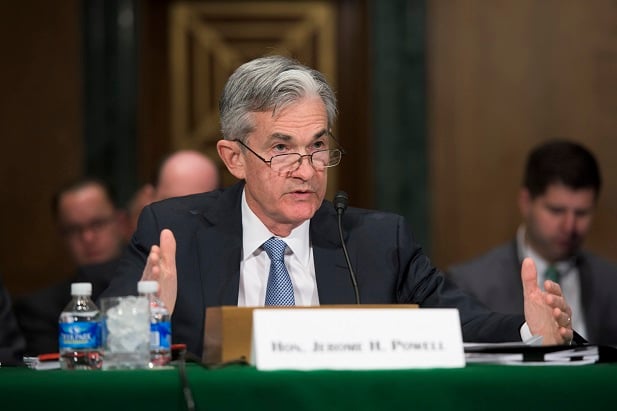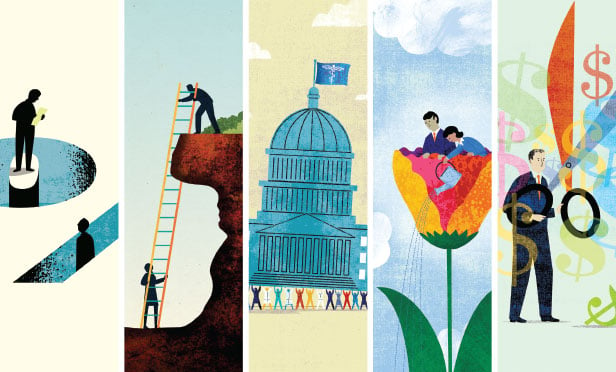
The Federal Reserve on Wednesday, as many economists expected, raised interest rates by 50 basis points. The move came on the heels of four consecutive increases of 75 basis points amid signs the economy is slowing enough to begin bringing down record inflation.
"Given that the hike wasn't as large as the previous increases, it could mean that the Fed appreciates the real and heightened risk of a recession in the near future," says Misi Simms, a portfolio manager at TIAA. "Therefore, taking a more defensive tack could mitigate some downside volatility during an economic downturn. That's applicable for both retirement plan savers and retirees who are managing a portfolio.
Recommended For You
"This exercise could start by asking these questions: What types of securities tend to weather economic headwinds better than others? Without abandoning any asset classes, how can I make some adjustments in equity and fixed-income holdings to anticipate a possible recession?"
The Fed began raising rates as inflation reached a 40-year high in March, but expectations for the pace and intensity of incoming rate hikes have grown more aggressive amid stubborn price gains and criticism that the central bank waited too long to start the hikes, Forbes reported. The increases, which work to slow inflation by tempering consumer demand, already have tanked the housing and stock markets: The S&P is down 16% this year, and existing home sales have plummeted 24%.
The series of rate increases is taking a toll on retirees just when they need stability and reliability in returns. Guido Petrelli, the founder and CEO of Merlin Investor, shared his insights on the implications of the rate increase on retirement investments: "First, we should consider the type of assets included in a retirement plan, as the effect of higher interest rates will differ based on the type of assets," he said. "When looking at mutual funds, cash is expected to be present and to benefit from higher rates. Then bonds are usually the substantial part of a retirement plan, as they are considered safer while still delivering good returns."
An increase in interest rates is likely to deliver two opposite effects for bonds in the short term, he said.
"Higher interest rates will have a positive impact on the income side, as mutual funds will likely add new holdings paying higher rates," Petrelli says. "Still higher rates will most likely have a negative effect on the net value of the bonds already present in the portfolio. The reason is that previously issued bonds will become less appealing to investors compared to the new issued ones reflecting the market's higher rates, and their price will fall, because to remain attractive, the par value will be discounted.
"It's also likely that stocks are part of a retirement portfolio, even if with a smaller percentage of allocation. In this case, higher interest rates are expected to affect companies because of higher borrowing costs, slowing growth and earnings, which will have a negative effect on the equity market."
As advisors plan for the coming year, they should anticipate continued action by the Fed. "The Fed's last meeting signaled that additional increases in interest rates shall be expected to reach the ultimately inflation target of 2%," Petrelli says. "Still, a slowing pace started with the last increase of a half point, compared to 75 basis points in November. It comes with the hope that a still-strong job market will prevent the economy from entering into a deep recession, even if a mild and transitory one remains likely."
With this scenario in mind, he said retirement plans may reduce exposure to stocks while favoring cash and new short-term bonds to mitigate the effect of a recession on the equity market, take advantage of already high rates on cash and new issued bonds and not lose the opportunity that could come for additional future rate hikes.
"At the same time, old bonds shall be maintained through maturity to avoid taking the loss from a short-term drop in share price deriving from higher interest rates compared to the time when the bonds were issued," Petrelli says. "In the opposite case of lower rates, reducing cash and bonds exposure in favor of equities, while choosing long-term over short-term bonds, would probably be the best route to take.
"Overall, there is still high uncertainty about inflation and the results of Fed intervention on the market and economy. Therefore, a more conservative approach shall be advisable while waiting for better consistent data over a longer timeframe before shifting to a more aggressive investment approach."
Simms reminds investors to remain focused on the bigger picture: "For the retirement investor, disciplining oneself to remain invested likely will prove most fruitful. Economic and market projections are relatively short in nature — about 12 to 24 months. Retirement saving is a long-term endeavor, so keeping that in mind will help keep investors centered and less anxious."






